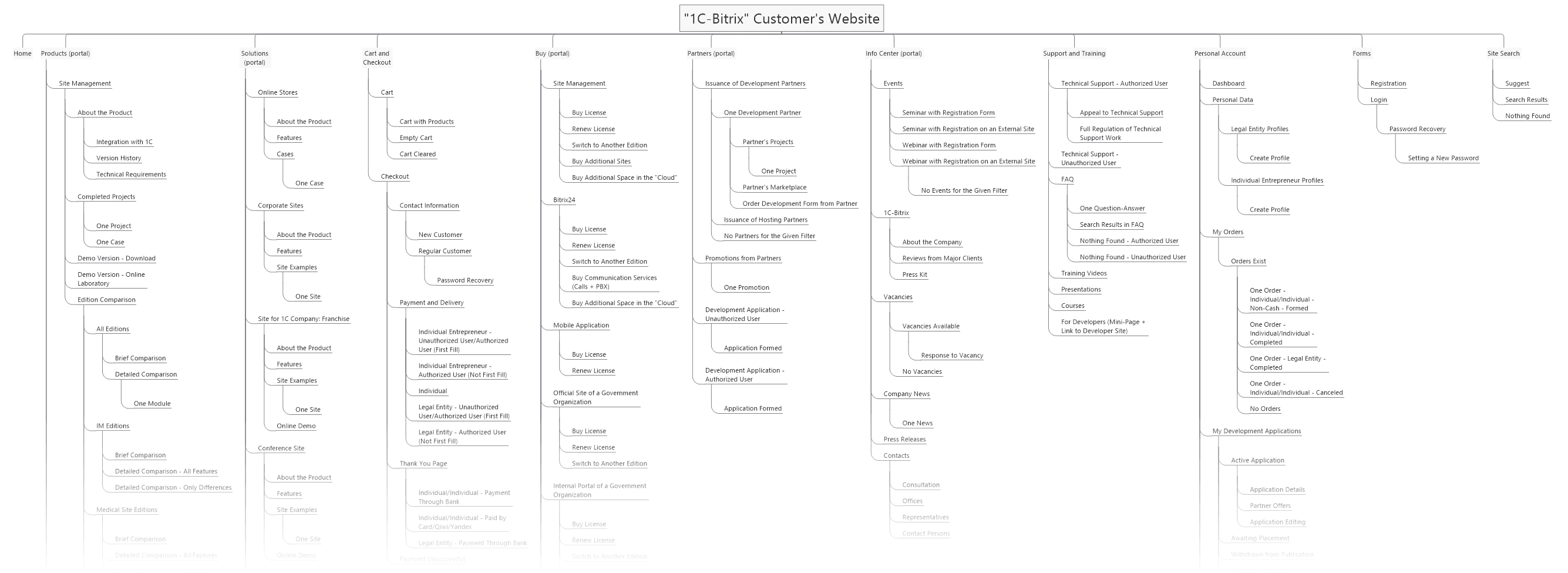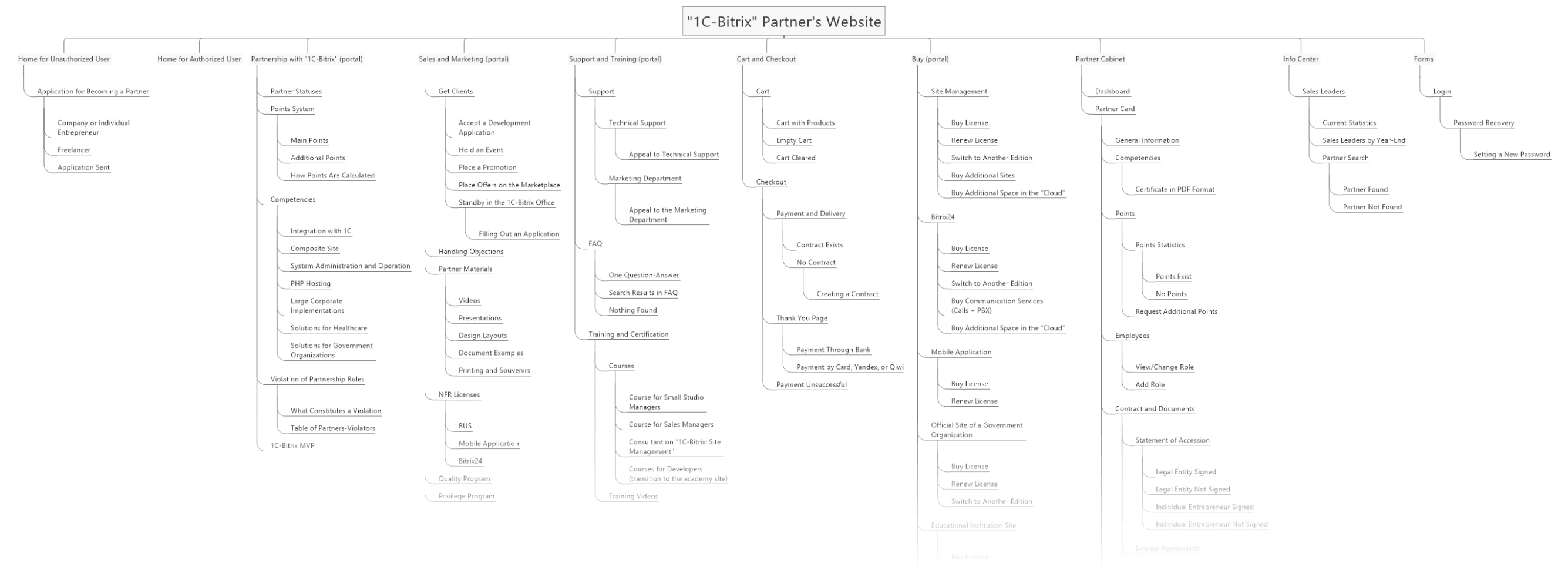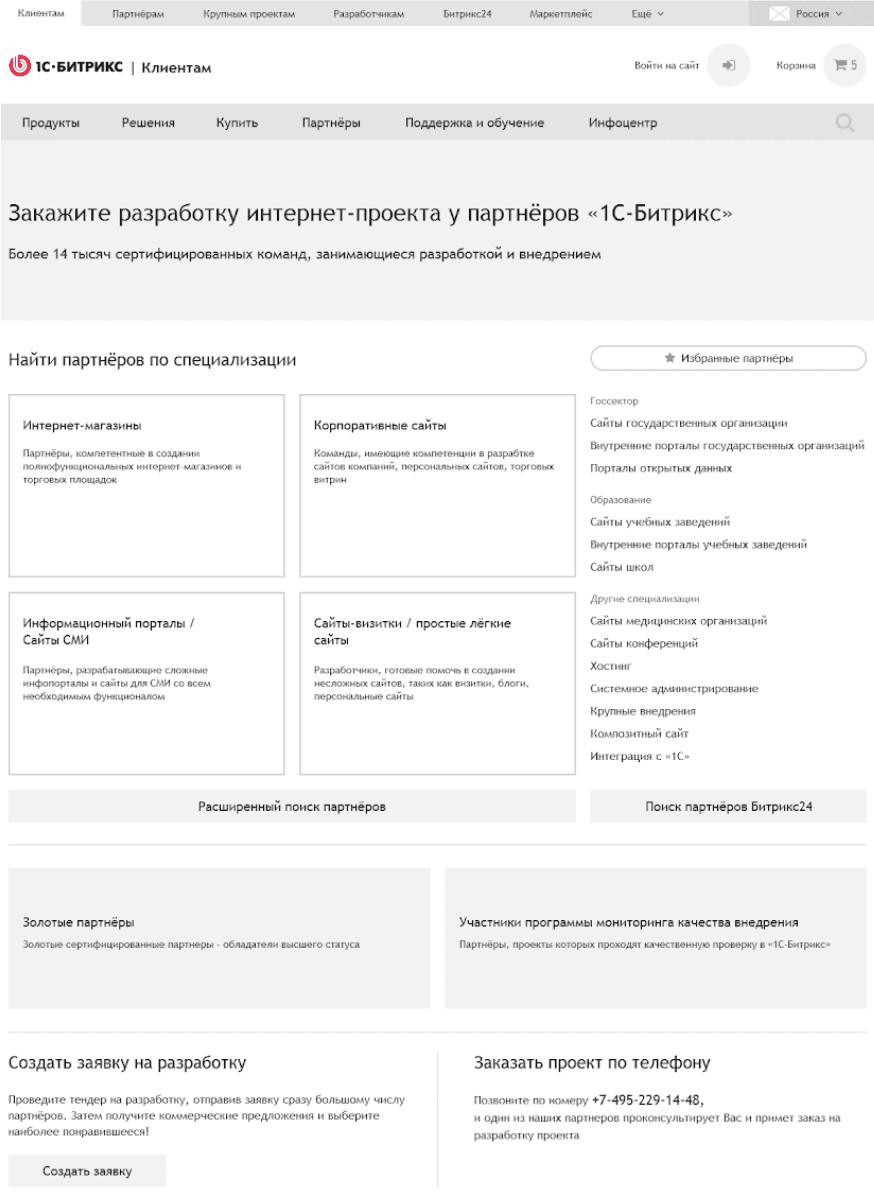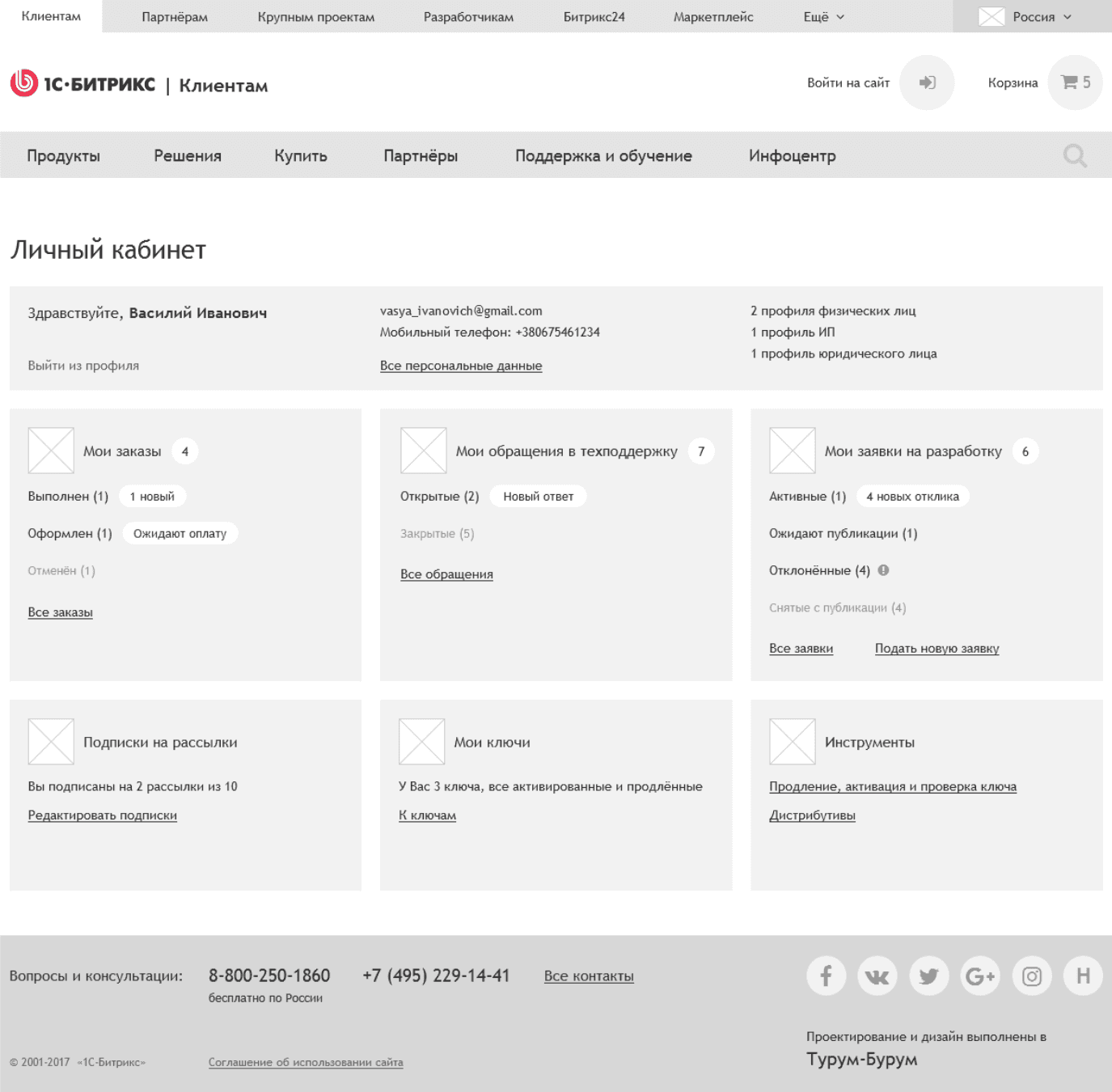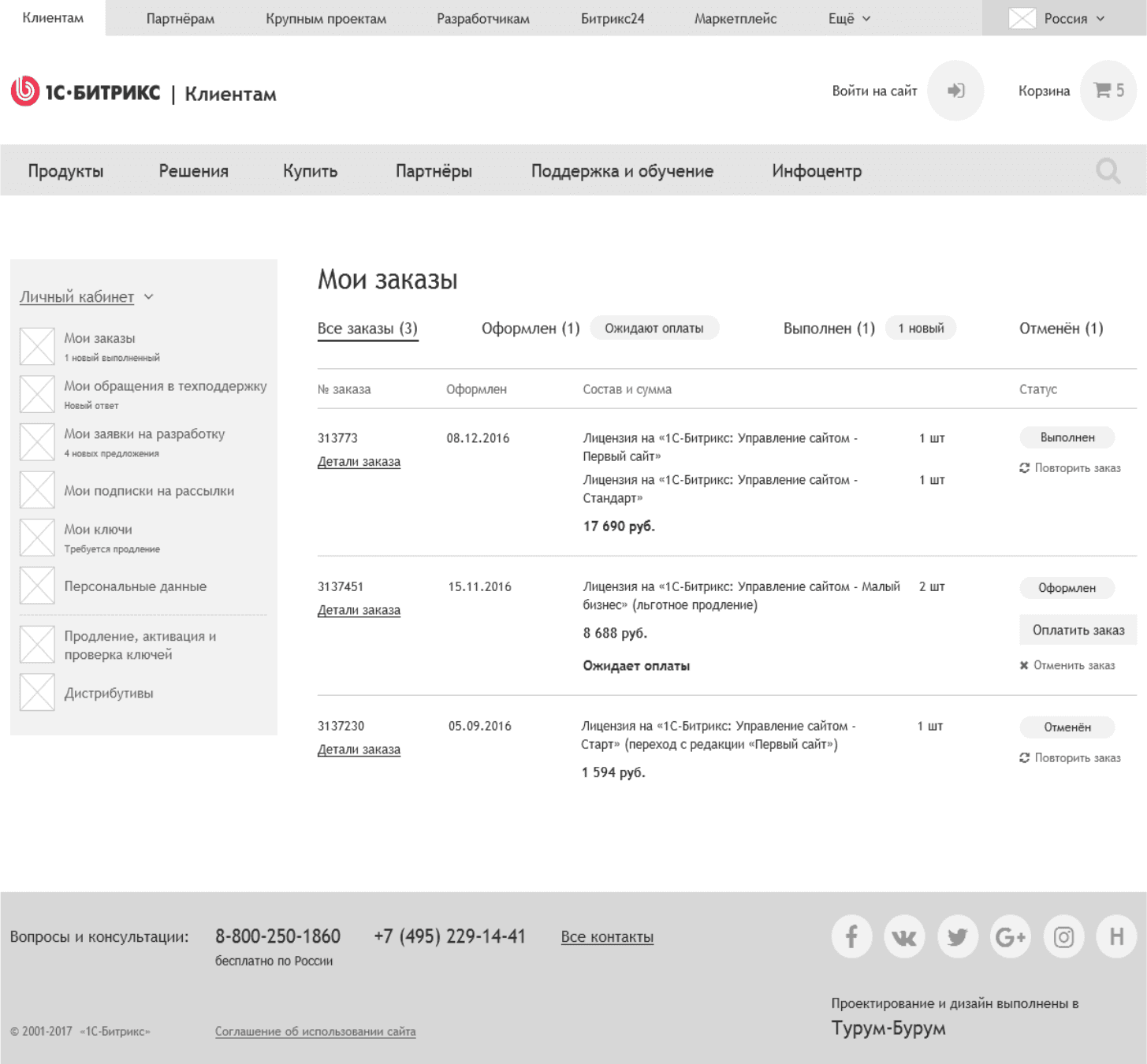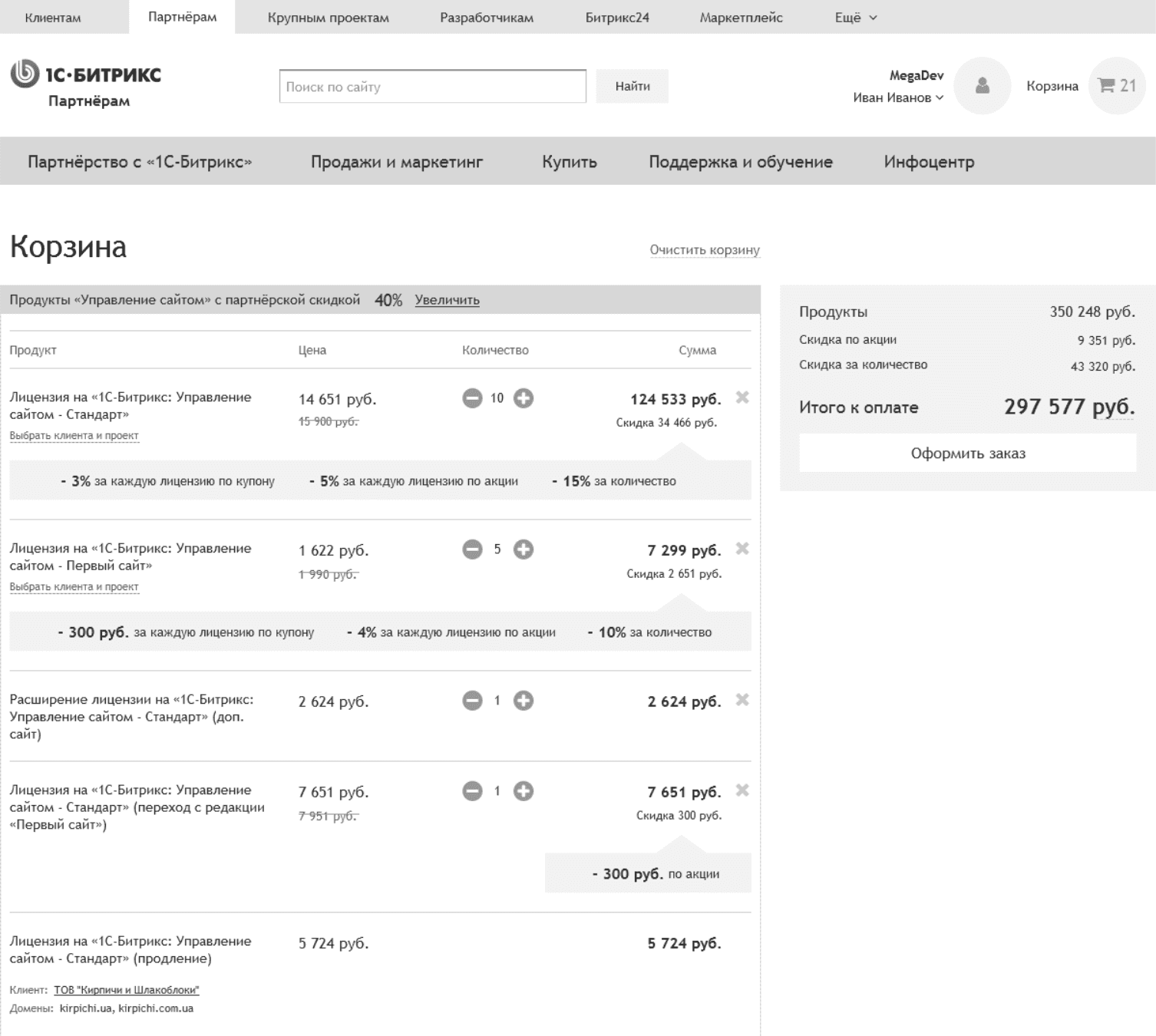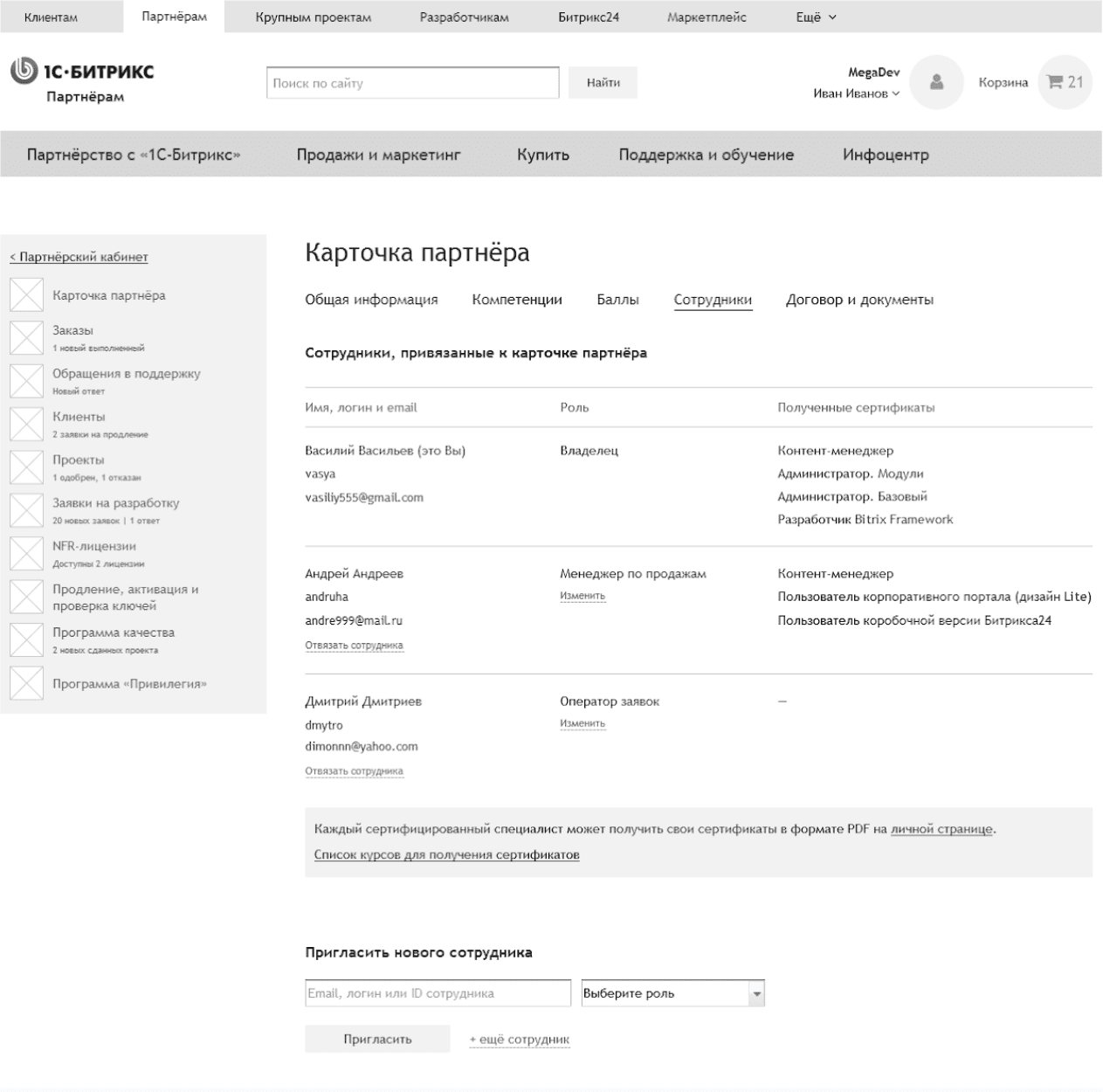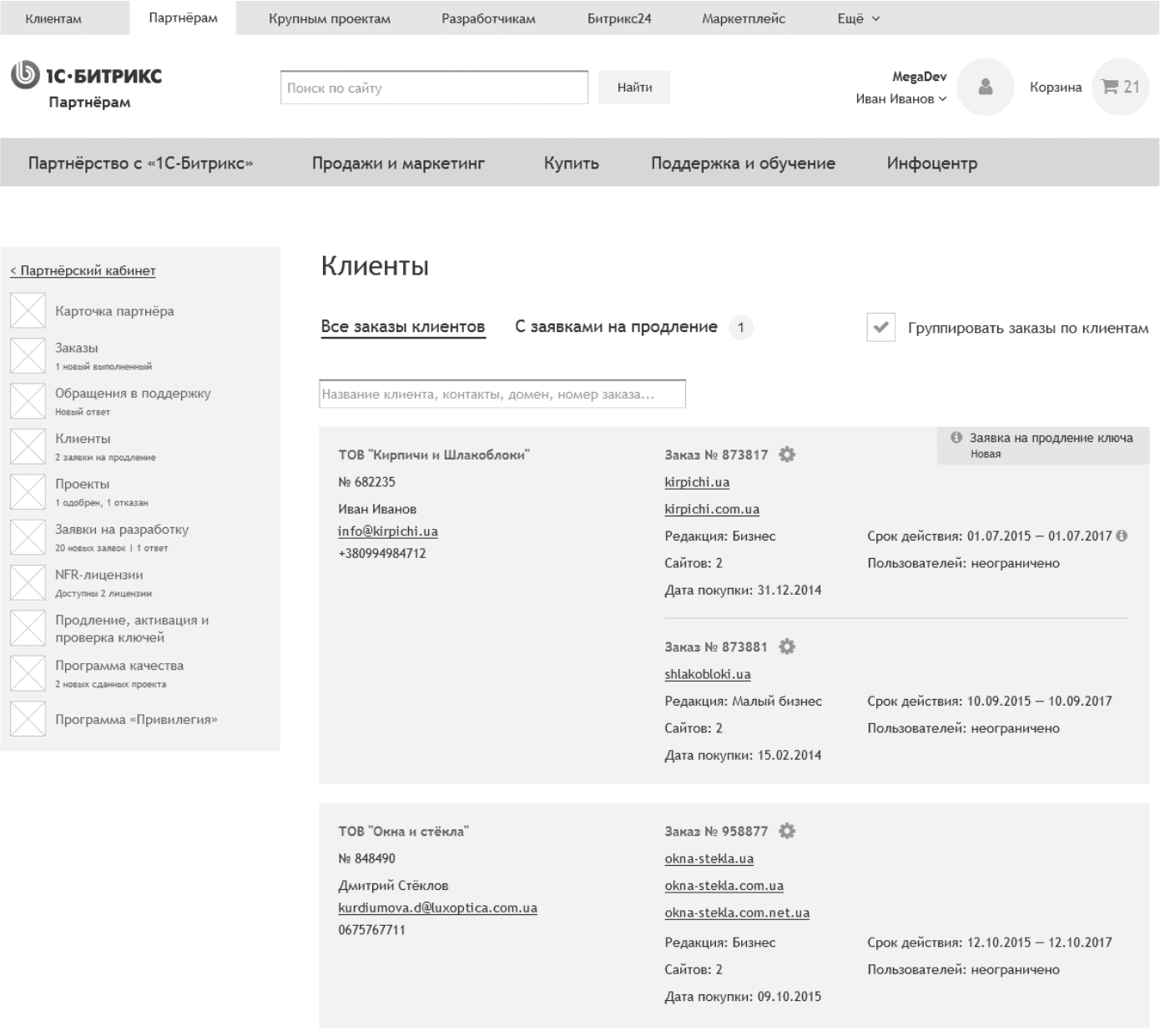

Company:
Company:
Turum-burum
Turum-burum
Timeline:
Timeline:
2016 — 2017
2016 — 2017
Team:
Team:
Me as a UX designer/Researcher
Head of UX/UI as an art director and a project manager
Web Analyst
Business Analyst
3x UI Designers
Specially invited project mentor (former information architect in Yandex)
Me as a UX designer/Researcher
Head of UX/UI as an art director and a project manager
Web Analyst
Business Analyst
3x UI Designers
Specially invited project mentor (former information architect in Yandex)
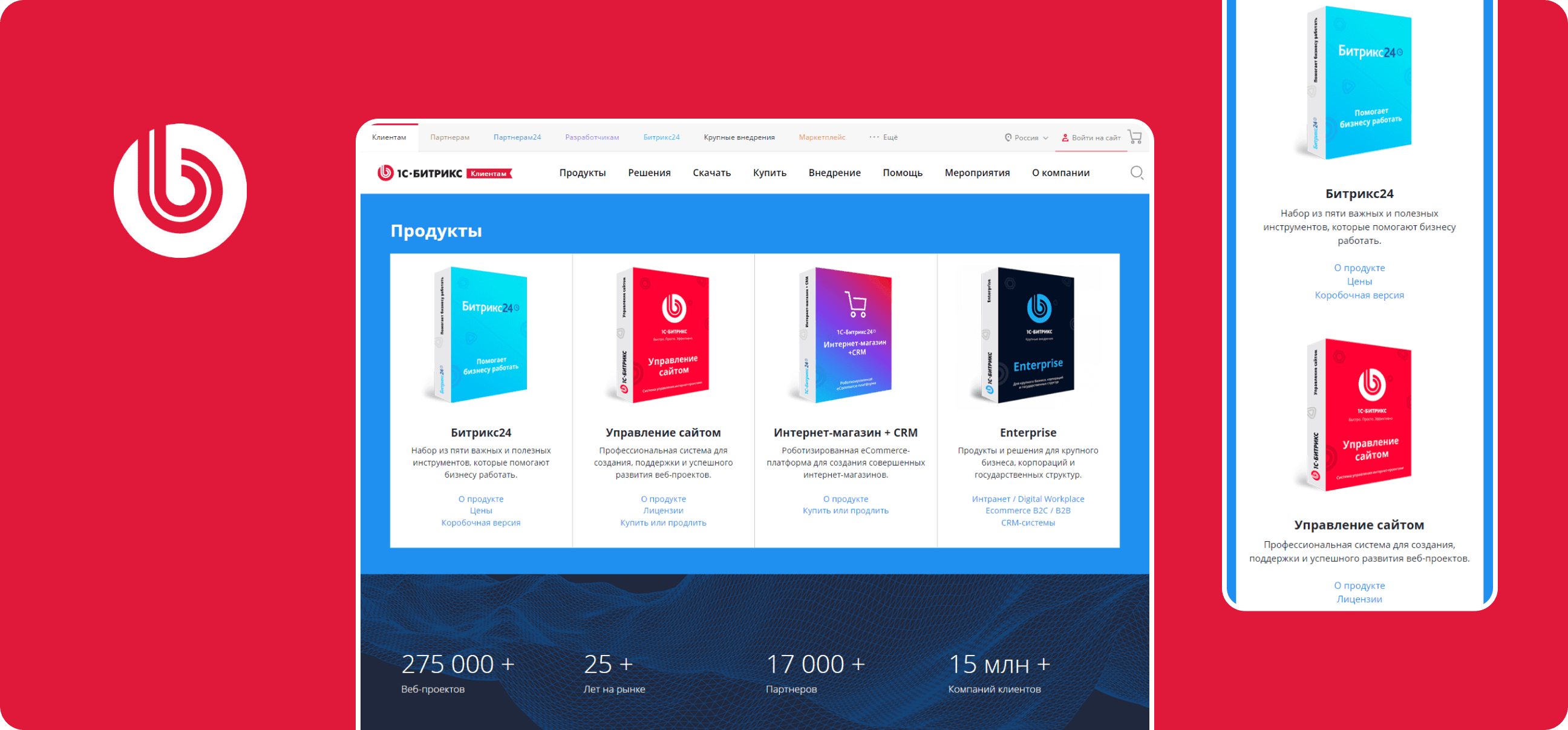

1C-Bitrix ↗ is a leading CMS in Russia and the CIS for building websites and online stores, known for its e-commerce features, SEO tools, and integration with 1C accounting software.
1C-Bitrix ↗ is a leading CMS in Russia and the CIS for building websites and online stores, known for its e-commerce features, SEO tools, and integration with 1C accounting software.
1C-Bitrix ↗ is a leading CMS in Russia and the CIS for building websites and online stores, known for its e-commerce features, SEO tools, and integration with 1C accounting software.
275,000
275,000
web projects are powered by 1С-ฺBitrix
web projects are powered by 1С-ฺBitrix
17,000
17,000
companies in the partner network
companies in the partner network
Results and Metrics
Key customer scenarios were significantly simplified, resulting in a 35% increase in product purchase conversion.
The new structure led to a 28% reduction in bounce rate.
The workflow with the partner site was greatly optimized. License renewal now takes three times less time.
Key customer scenarios were significantly simplified, resulting in a 35% increase in product purchase conversion.
The new structure led to a 28% reduction in bounce rate.
The workflow with the partner site was greatly optimized. License renewal now takes three times less time.
Problems
Problems
Problems
High information load on users — too much content per unit area.
Complex scenarios for selecting and purchasing products.
Uncontrolled and unsystematic growth of content on the website. New information was sometimes added to sections where users were unlikely to find it.
A significant amount of "legacy" content that was necessary, but in these situations, no one knew where to place it.
High information load on users — too much content per unit area.
Complex scenarios for selecting and purchasing products.
Uncontrolled and unsystematic growth of content on the website. New information was sometimes added to sections where users were unlikely to find it.
A significant amount of "legacy" content that was necessary, but in these situations, no one knew where to place it.
What I've done
What I've done
What I've done
Identified the existing target audience of the product.
Reviewed the structure of current sites in the product ecosystem and defined further work steps.
Studied analytics data and found weak points.
Participated in interviews with business partners to gather feedback.
Proposed hypotheses about website user categories based on the data obtained.
Created personas based on research data.
Created a Customer Journey Map, scenarios, use cases, and a new site structure.
Reworked the comparison of product plans.
Created prototypes for over 400 pages.
Identified the existing target audience of the product.
Reviewed the structure of current sites in the product ecosystem and defined further work steps.
Studied analytics data and found weak points.
Participated in interviews with business partners to gather feedback.
Proposed hypotheses about website user categories based on the data obtained.
Created personas based on research data.
Created a Customer Journey Map, scenarios, use cases, and a new site structure.
Reworked the comparison of product plans.
Created prototypes for over 400 pages.
Current structure review
Current structure review
Current structure review
Initially, I revised the structures of both the client's and partner's websites within the "1C-Bitrix" ecosystem to identify subsequent steps and gain a deeper understanding of the website's structure and content.
Initially, I revised the structures of both the client's and partner's websites within the "1C-Bitrix" ecosystem to identify subsequent steps and gain a deeper understanding of the website's structure and content.
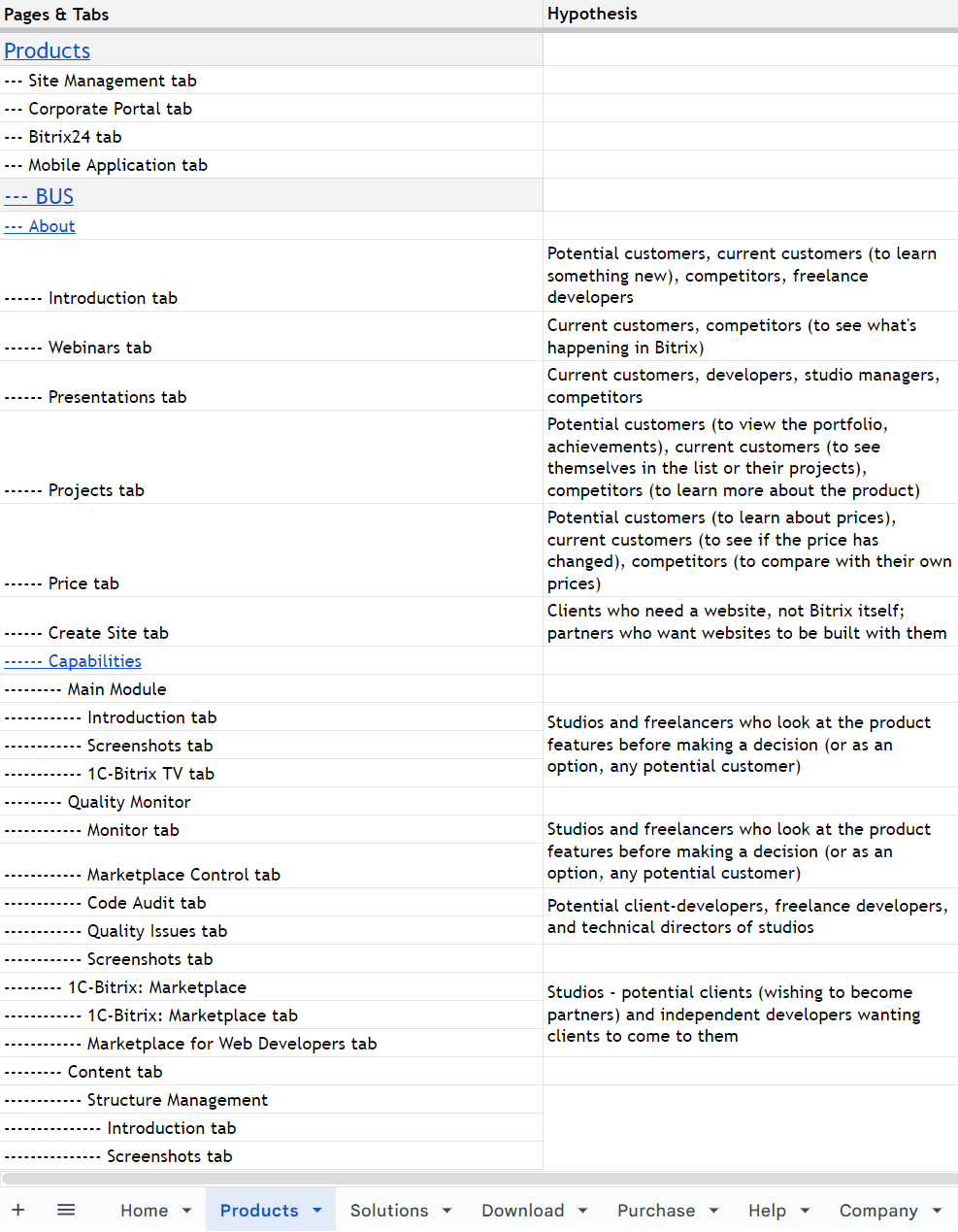





Target audience
Target audience
Target audience
I have identified the target audience of an existing product to better understand the needs, desires, and behavior of current and potential users. This has also helped focus on the key design features that are most important to users.
I have identified the target audience of an existing product to better understand the needs, desires, and behavior of current and potential users. This has also helped focus on the key design features that are most important to users.
Here is a partial list of target audience segments. See the full list in Google Sheets.
Here is a partial list of target audience segments. See the full list in Google Sheets.
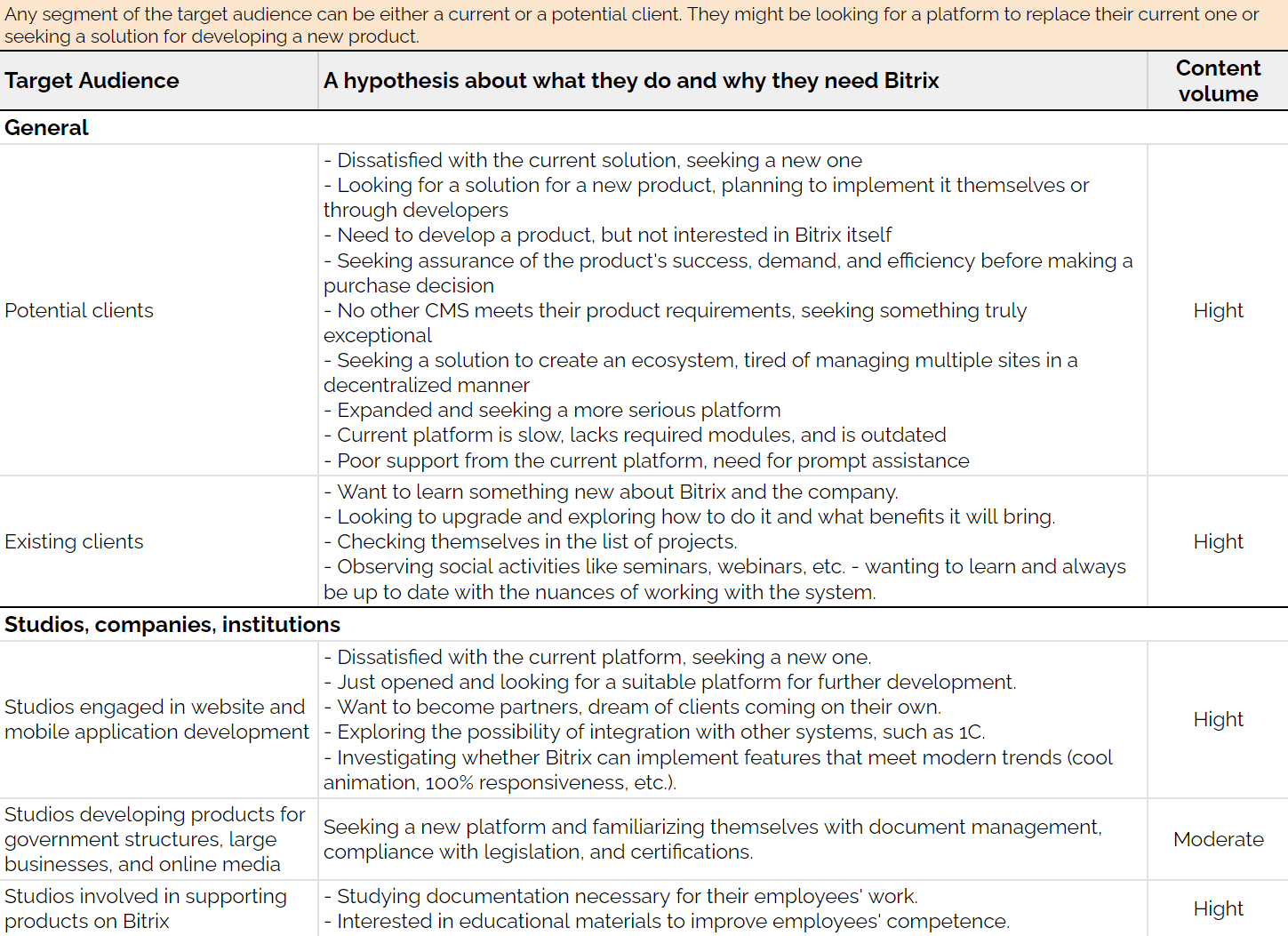


Analytics data
Analytics data
Analytics data
We analyzed Google Analytics data and identified a list of issues that users encountered. Some of the key findings included:
Key pages of the website contained a lot of information irrelevant to users.
Users only visited a few items in the main menu, leading to misconceptions about the product.
Users often "wandered around" the website, visiting random pages without achieving their goals.
We analyzed Google Analytics data and identified a list of issues that users encountered. Some of the key findings included:
Key pages of the website contained a lot of information irrelevant to users.
Users only visited a few items in the main menu, leading to misconceptions about the product.
Users often "wandered around" the website, visiting random pages without achieving their goals.



Them we developed a map based on analytics data, highlighting the website's most and least visited sections.
Them we developed a map based on analytics data, highlighting the website's most and least visited sections.
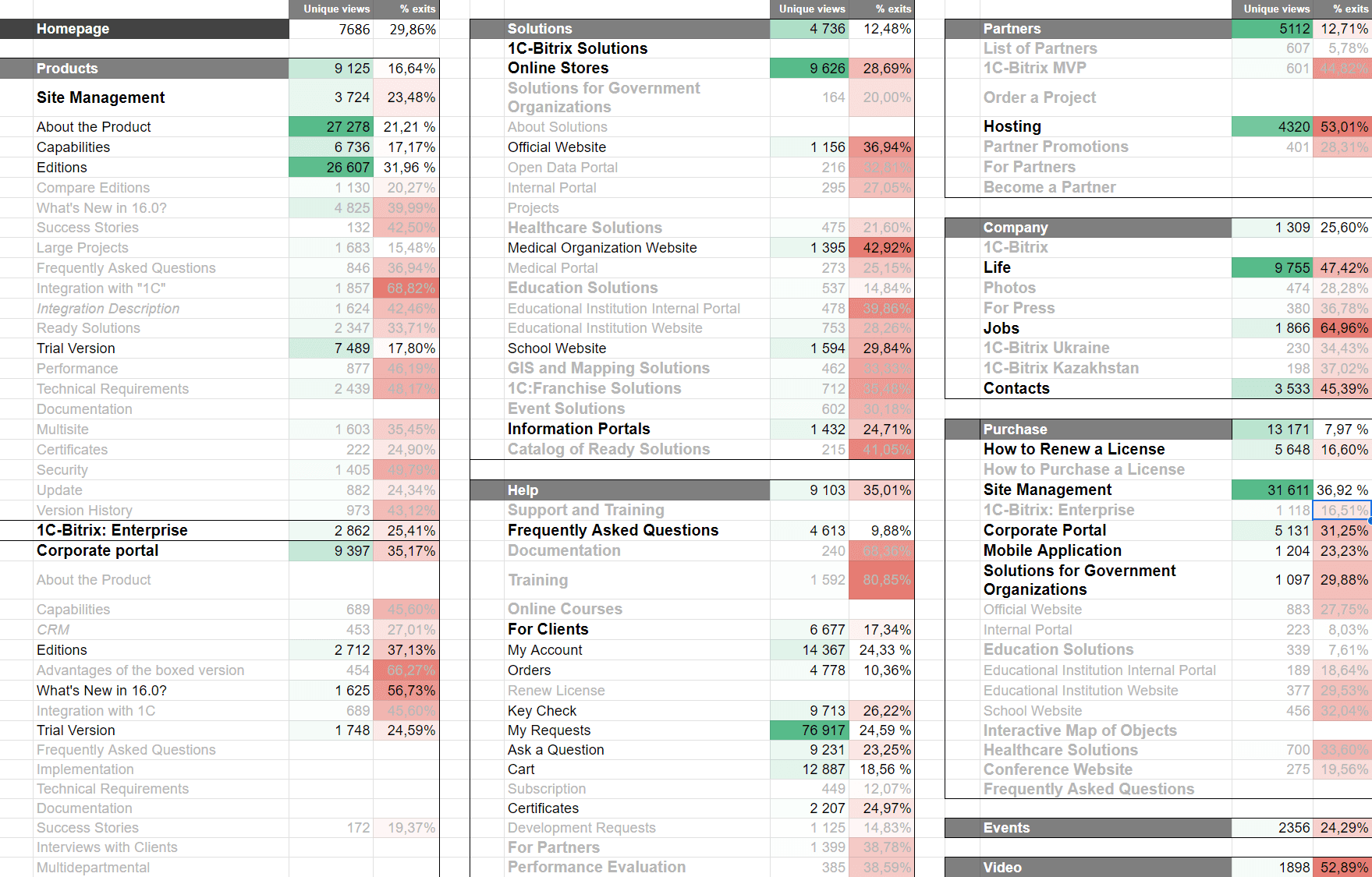


Interviews
Interviews
Interviews
We conducted in-depth interviews with various product users to gather essential information for our work. We prepared specific questions for each type of participant in advance and obtained a wealth of insightful data during the interviews.
The respondents included:
Owners of three different companies that hold Gold Partner status with "1C-Bitrix" and use this CMS as a core tool in their development process.
An online store owner.
A representative from a government organization.
An offline business owner.
A subscriber.
We conducted in-depth interviews with various product users to gather essential information for our work. We prepared specific questions for each type of participant in advance and obtained a wealth of insightful data during the interviews.
The respondents included:
Owners of three different companies that hold Gold Partner status with "1C-Bitrix" and use this CMS as a core tool in their development process.
An online store owner.
A representative from a government organization.
An offline business owner.
A subscriber.
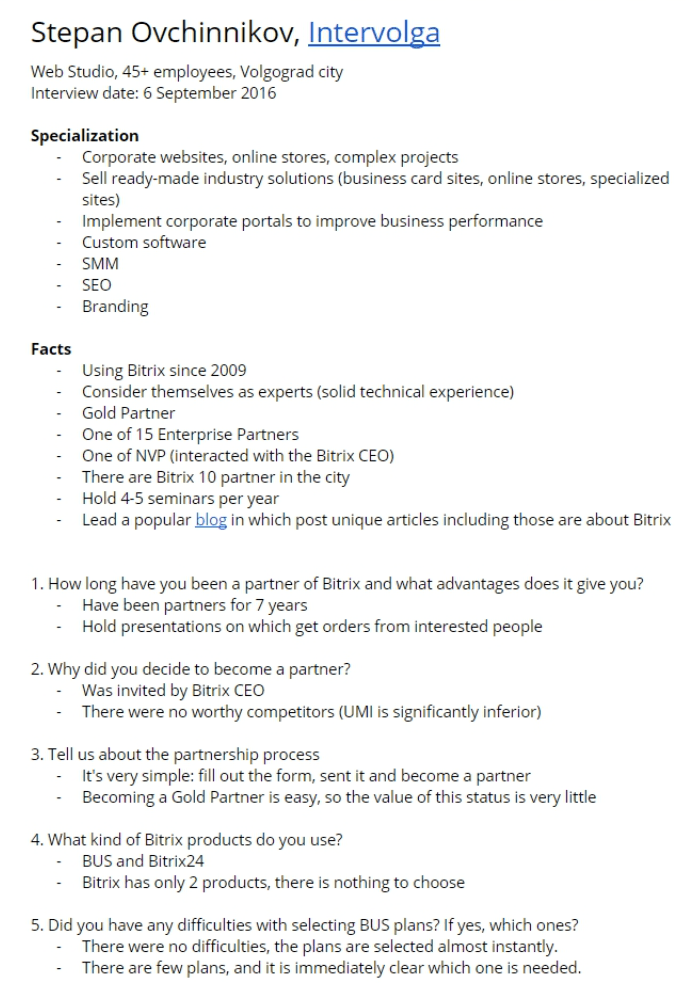

Hypotheses
Hypotheses
Hypotheses
Based on the data we gathered, we formulated hypotheses about the categories of the website's users. Some of these hypotheses included:
Based on the data we gathered, we formulated hypotheses about the categories of the website's users. Some of these hypotheses included:
Attempting to find "their" product, users move chaotically among products and solutions on the client website, failing to find the necessary information.
Attempting to find "their" product, users move chaotically among products and solutions on the client website, failing to find the necessary information.
Users are overwhelmed by the plethora of options such as products, plans, features, ready solutions, and extensions, while they usually have a specific need to create a certain website.
Users are overwhelmed by the plethora of options such as products, plans, features, ready solutions, and extensions, while they usually have a specific need to create a certain website.
Product pages are largely filled with information that does not lead to a purchase. For most users, this content is considered "trash," and it is only useful for a small portion of the audience.
Product pages are largely filled with information that does not lead to a purchase. For most users, this content is considered "trash," and it is only useful for a small portion of the audience.
The unclear functionality of the client and partner accounts results in constant switching between websites, which is tiring for users.
The unclear functionality of the client and partner accounts results in constant switching between websites, which is tiring for users.
The navigation model is ineffective, as users do not notice and/or use most of the navigation elements.
The navigation model is ineffective, as users do not notice and/or use most of the navigation elements.
Some users believe that the website is geared towards developers due to the abundance of technical information, leading them to leave the website.
Some users believe that the website is geared towards developers due to the abundance of technical information, leading them to leave the website.
Personas
Personas
Personas
Based on the research data, we created four personas.
Based on the research data, we created four personas.
Two for clients:
Two for clients:



And two for partners:
And two for partners:



Customer Journey Map
Customer Journey Map
Customer Journey Map
Then, we developed the client's CJM to comprehensively delineate their user flow, ensuring a thorough understanding of their interactions and experiences at each touchpoint.
Then, we developed the client's CJM to comprehensively delineate their user flow, ensuring a thorough understanding of their interactions and experiences at each touchpoint.



Scenarios and Use Cases
Scenarios and Use Cases
Scenarios and Use Cases
We developed a variety of scenarios and use cases, with the most significant ones including:
Product planning and solution selection
Selecting a partner and creating a development request
Purchasing a product
Applying for a partnership
Responding to client inquiries
License renewal
We developed a variety of scenarios and use cases, with the most significant ones including:
Product planning and solution selection
Selecting a partner and creating a development request
Purchasing a product
Applying for a partnership
Responding to client inquiries
License renewal
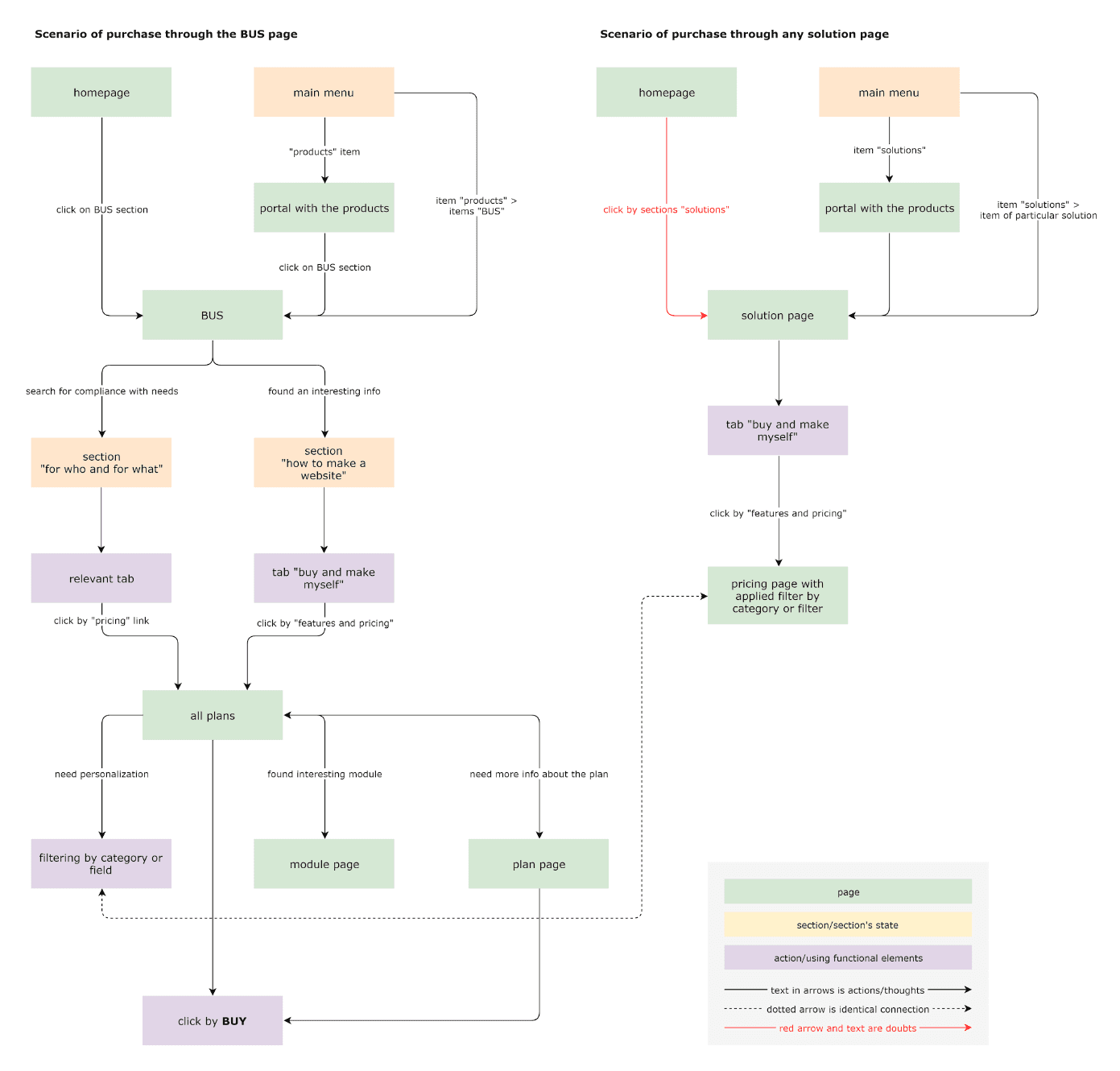


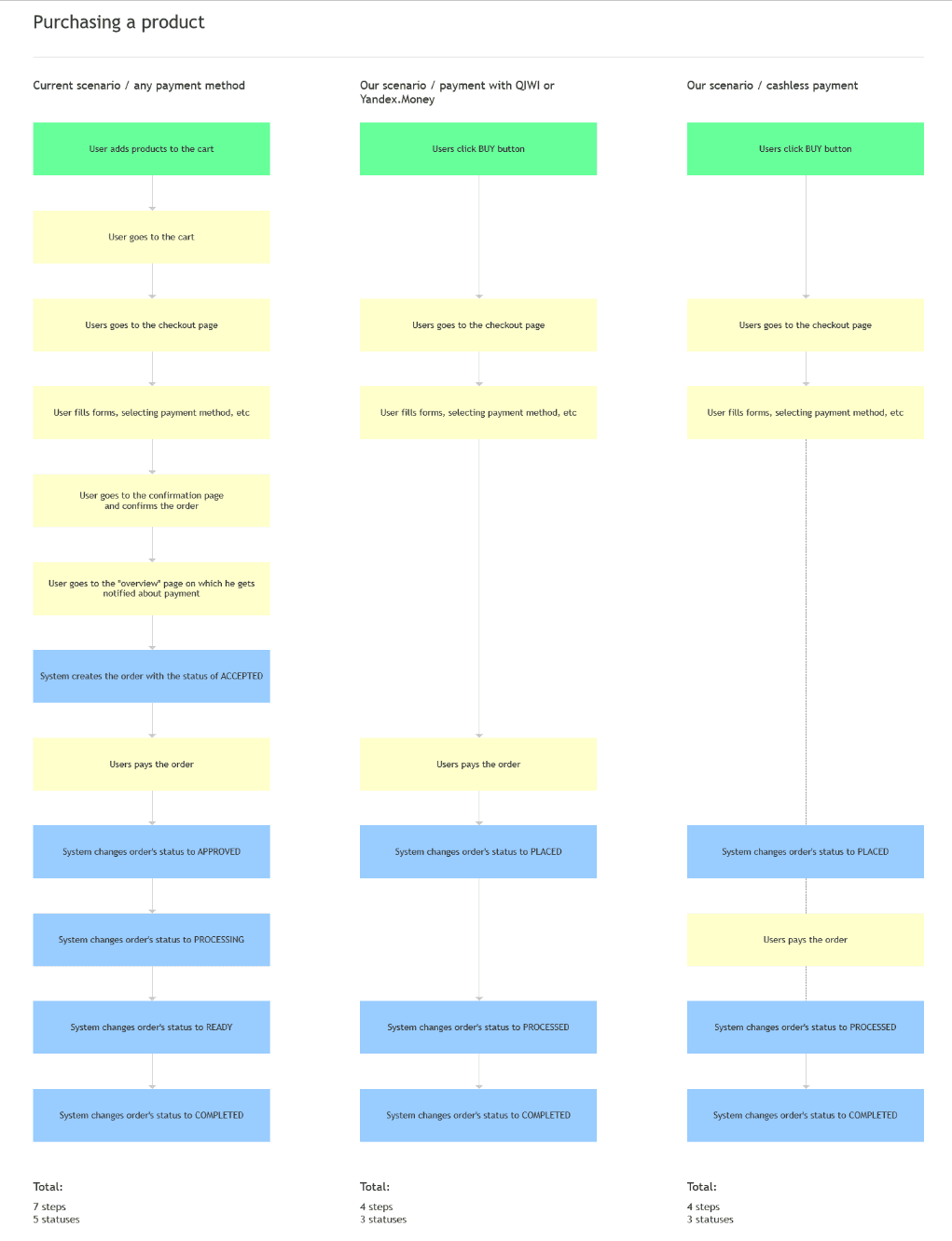


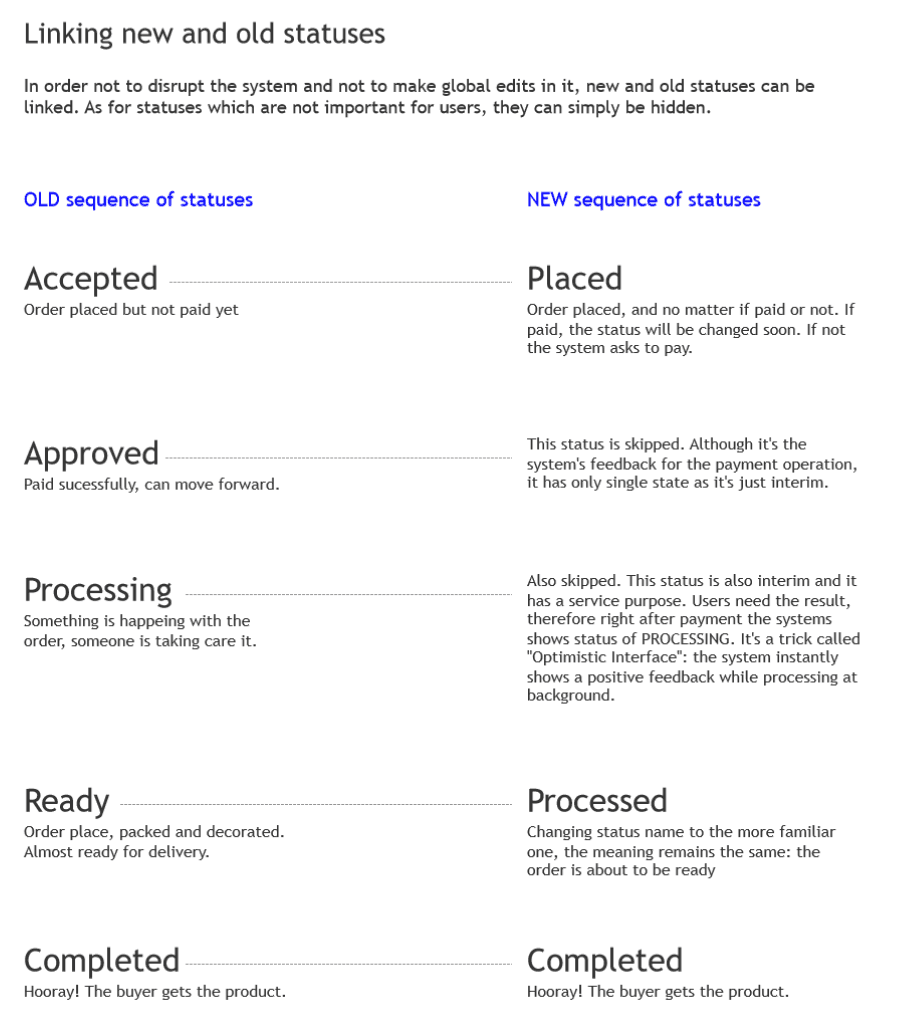


Plan comparison
Plan comparison
Plan comparison
It was a critical stage, as it is a pivotal step in the sales funnel. This section required significant work to create from scratch, due to its initially disorganized and incoherent structure. We devoted considerable effort to reorganizing and streamlining the plan comparison process for better clarity and effectiveness.
It was a critical stage, as it is a pivotal step in the sales funnel. This section required significant work to create from scratch, due to its initially disorganized and incoherent structure. We devoted considerable effort to reorganizing and streamlining the plan comparison process for better clarity and effectiveness.
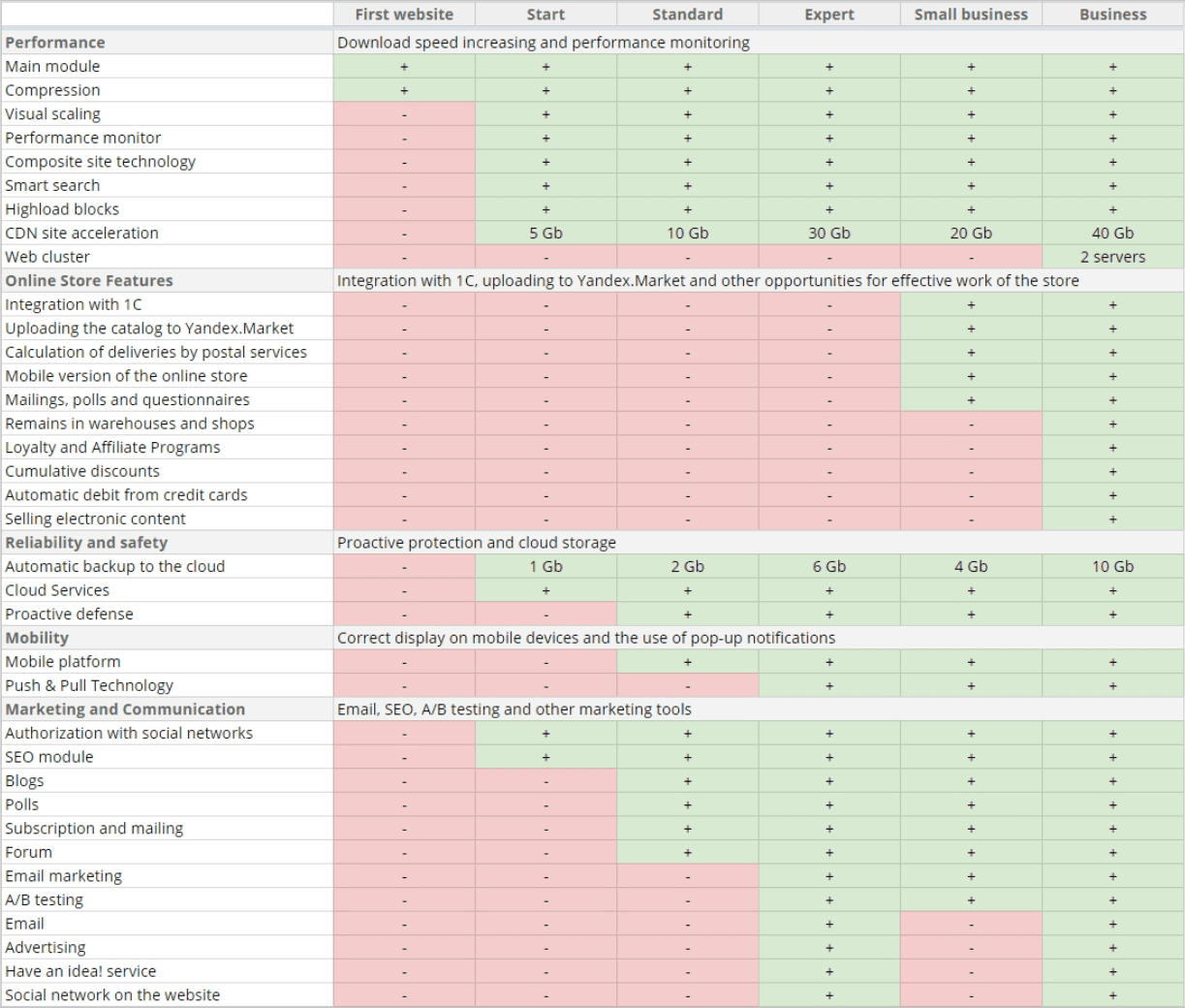


New structure
New structure
New structure
I developed a structure for the client and partner websites based on all the data gathered during the process, aiming to organize the content and ensure logical navigation. The structure turned out to be quite extensive, so I am presenting only a portion of it here. The complete structure can be viewed via the links provided at the bottom.
I developed a structure for the client and partner websites based on all the data gathered during the process, aiming to organize the content and ensure logical navigation. The structure turned out to be quite extensive, so I am presenting only a portion of it here. The complete structure can be viewed via the links provided at the bottom.
Prototypes
I prototyped over 400 pages, most of which were dynamic with a total of more than 1000 states. All prototypes contained real content, with no placeholders like "lorem ipsum." These prototypes were then handed over to a UI designer, who spent over 400 hours creating detailed mockups.
I prototyped over 400 pages, most of which were dynamic with a total of more than 1000 states. All prototypes contained real content, with no placeholders like "lorem ipsum." These prototypes were then handed over to a UI designer, who spent over 400 hours creating detailed mockups.
Current status
Current status
Current status
The product successfully acquired a new design, after which it became even more successful: the software is developing, and the number of partners and projects in development is rapidly growing. As of 2021, "1C-Bitrix: Site Management" is the most popular commercial CMS by actual installations on websites according to the iTrack rating.
The product successfully acquired a new design, after which it became even more successful: the software is developing, and the number of partners and projects in development is rapidly growing. As of 2021, "1C-Bitrix: Site Management" is the most popular commercial CMS by actual installations on websites according to the iTrack rating.
